3D Truss Models
-
Version 1.2.0 - 12.13.2015
- Added ceiling joist option for Gable Rafter Roof.
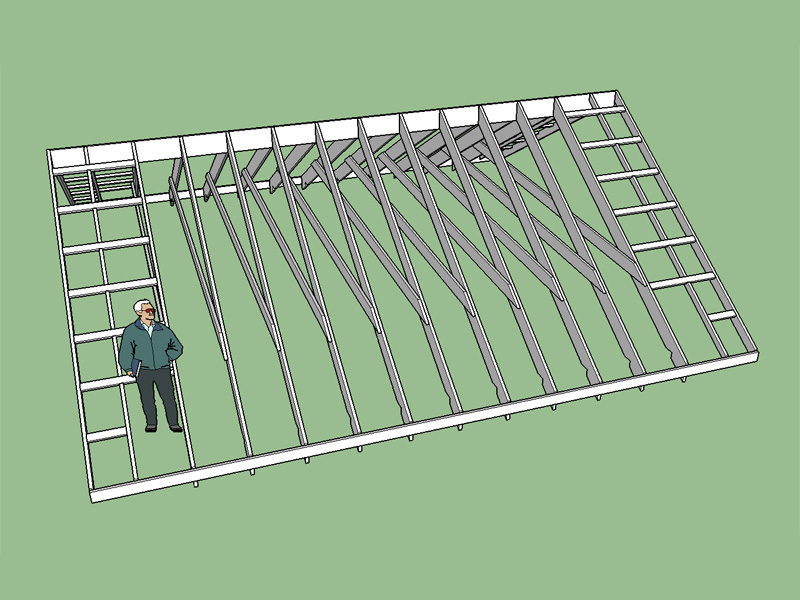
Note: In the image shown I have raised the ceiling joist 24", the default is zero, or resting on the top plate of the wall.
-
With regards to outlookers and I-joist roofs I also noticed in the TJ-4000 (Detail O) they only show the outlookers in a vertical orientation. Are we allowed to do a horizontal orientation (outlookers laid flat)? And if so how do we make that attachment?
-
Various configurations of a cambered truss:
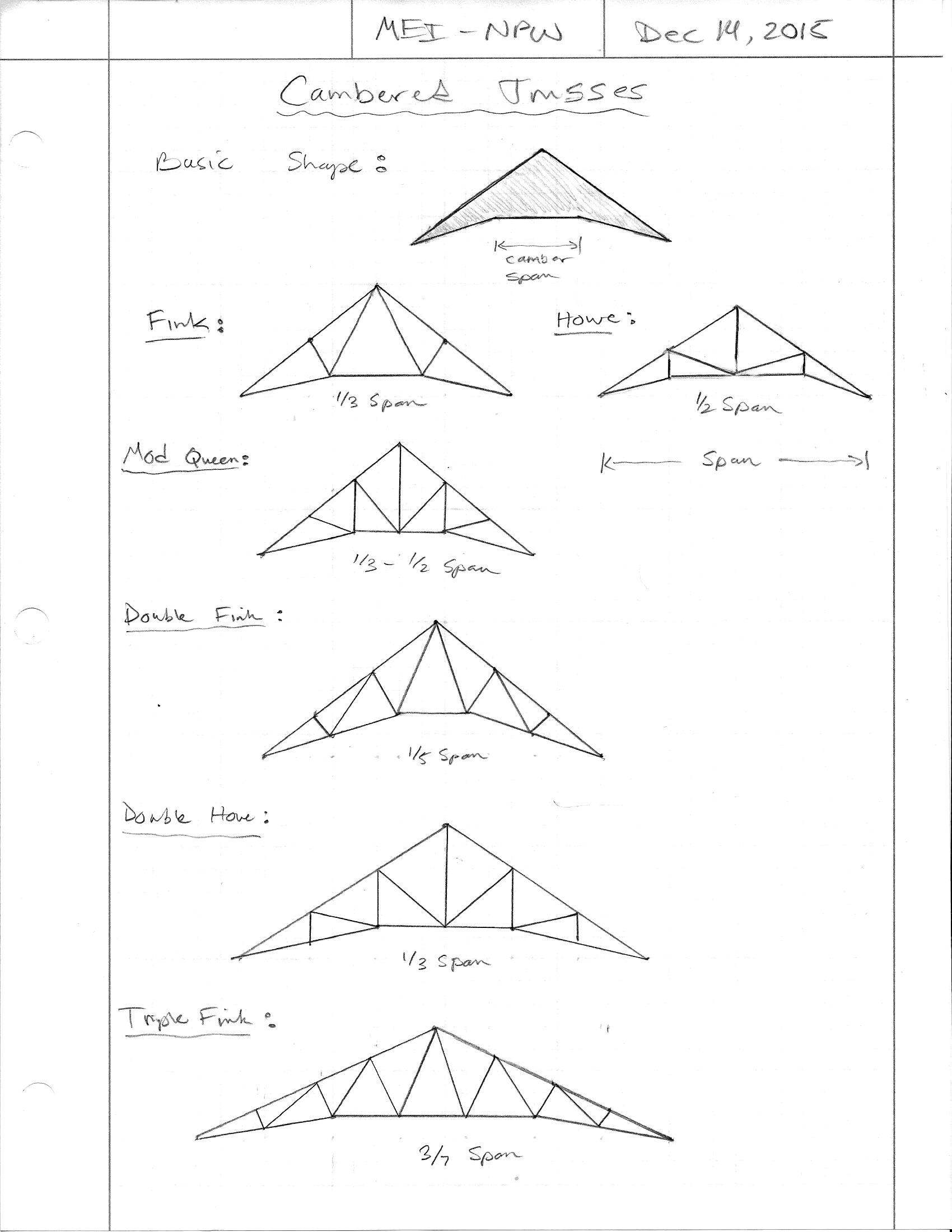
-
Things have been a little slow on the plugin development and also on visits to my plugin page the last few days as I have been busy working on some local engineering projects and have not had the time to work on any new features.
Then all of sudden this morning I noticed things were going a little wild on the site with a ton of traffic. Turns out my plugin has somehow found its way to the top of the stack on Extension Warehouse:
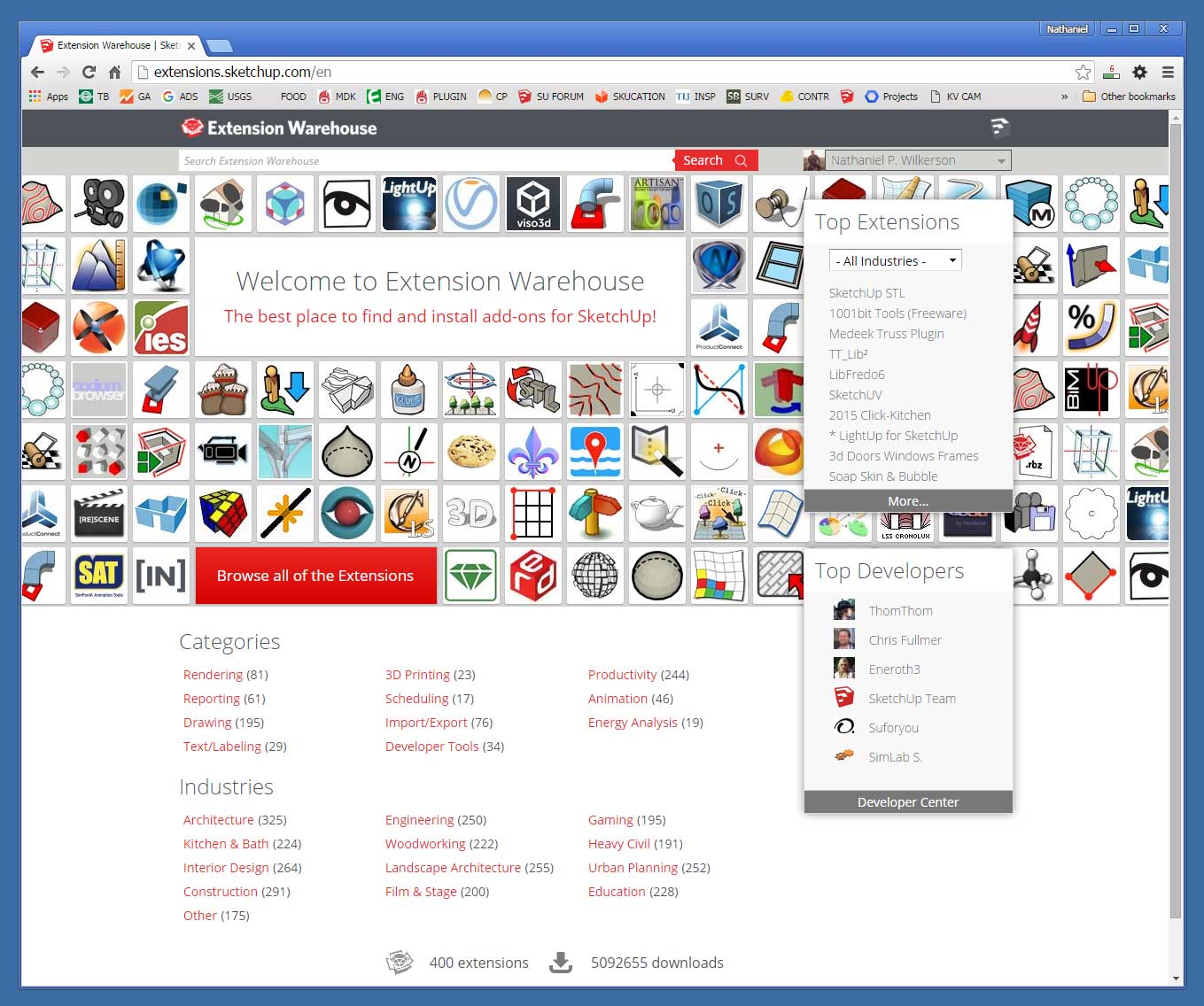
Not sure how it ended up there but my server has registered a serious uptick in traffic.
-
Version 1.2.1- 12.16.2015
- Added gable end trusses (ladders) and ribbon boards to the floor truss type (Warren - System 42).
- Sheathing option enabled under advanced floor options for floor trusses.
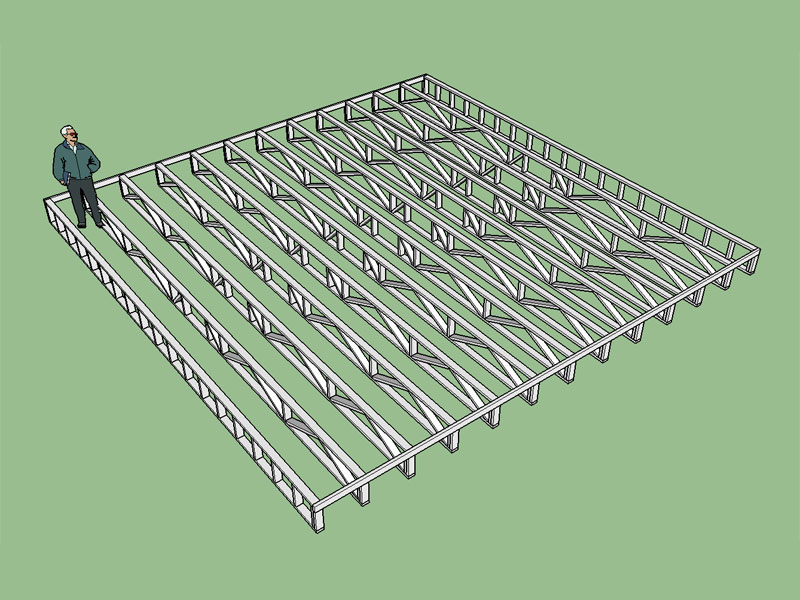
-
Version 1.2.2 - 12.21.2015
- Added TJI Rafter Roof with Glulam Beam (all advanced options enabled).
- Added dropped beam option for TJI Rafter Roof with Glulam Beam: Bevelled plate
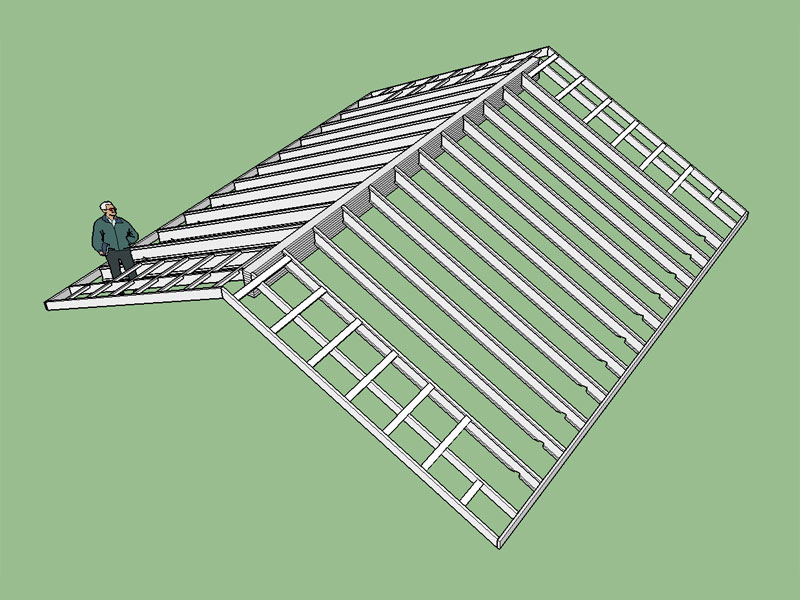
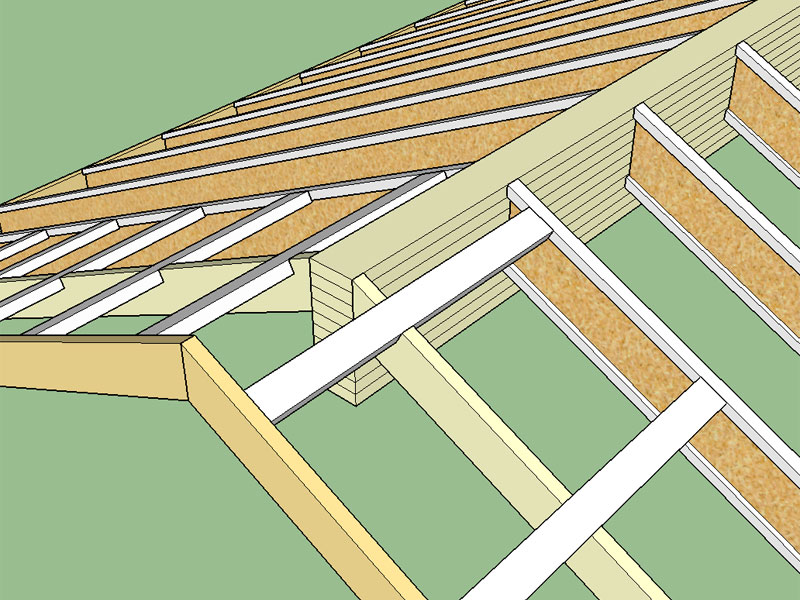
Note, the birdsmouth cut at the lower bearing point. What I am not showing is the additional web blocking (stiffeners) required at this bearing point and at the ridge beam, see TJI-4000 for more details.
-
Version 1.2.2 - 12.23.2015
- Structural outlookers notched around TJI top flange when oriented vertically, as per TJI manufacturer's structural details.
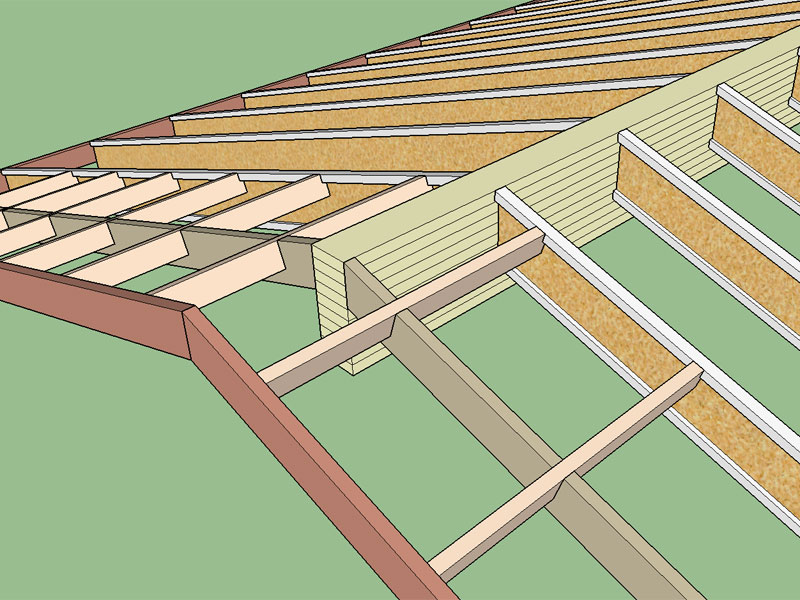
The tails of the TJI joists at the overhangs is left untrimmed however it is very easy to trim the tail of the rafters as shown below to customize to your particular roof requirements.
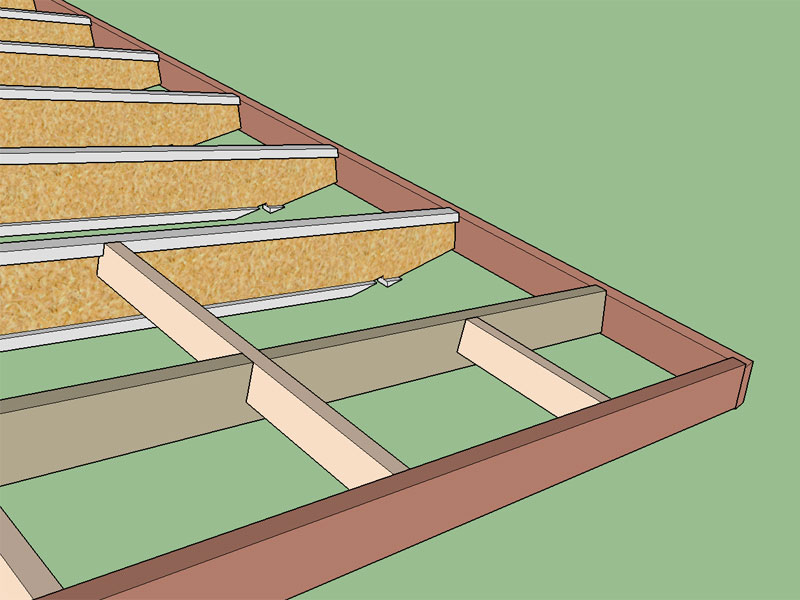
-
Version 1.2.3 - 12.29.2015
- Added Hip Rafter Roof.
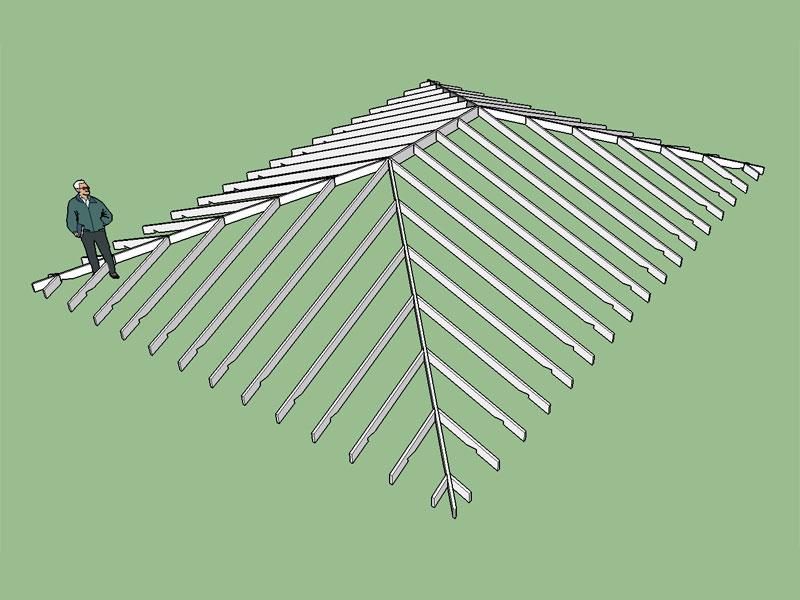
A square hip roof (pyramid):
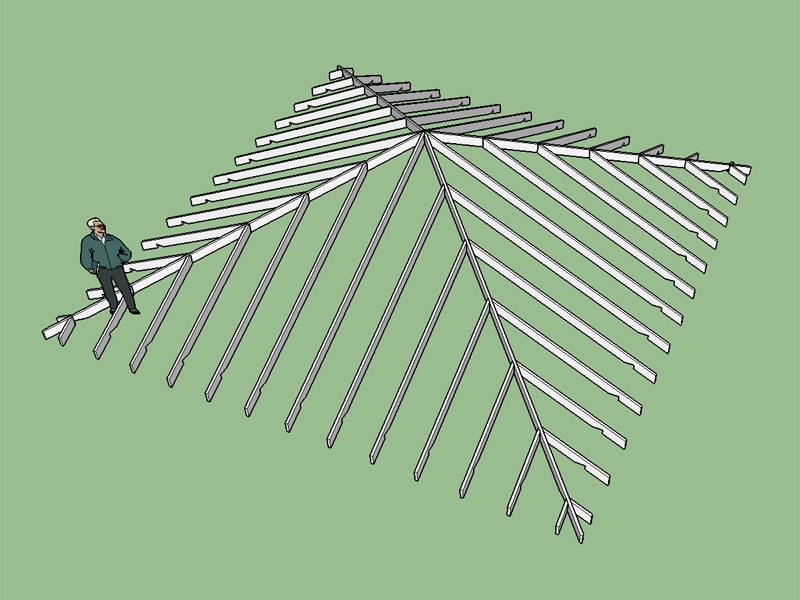
I still need to add in the advanced options for this roof type (sheathing, fascia etc...) I'm also thinking about ceiling joists and how best to configure them. For low pitch hip roofs the ceiling joists near the hip ends will clash with the hip jack rafters unless they are oriented parallel to the jack rafters.
-
A more complex hip roof combined with some trusses. Note I have not trimmed back all of the rafters in the top image.
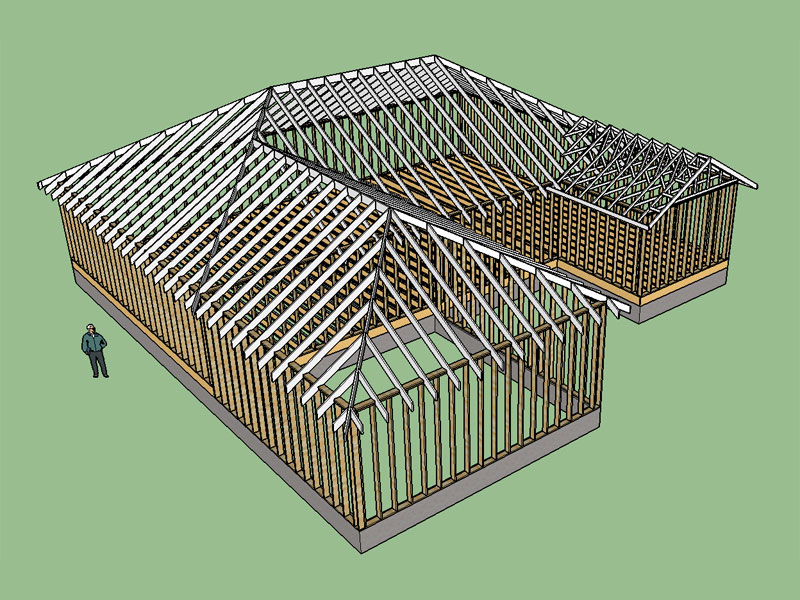
I initially generated the hip roofs (two rectangles) and then deleted the appropriate members and trimmed the common rafters to create the valley jack rafters and cripple jack rafters. The valley rafter was created by copying an instance of one of the hip rafters and moving it into place. The end result is:
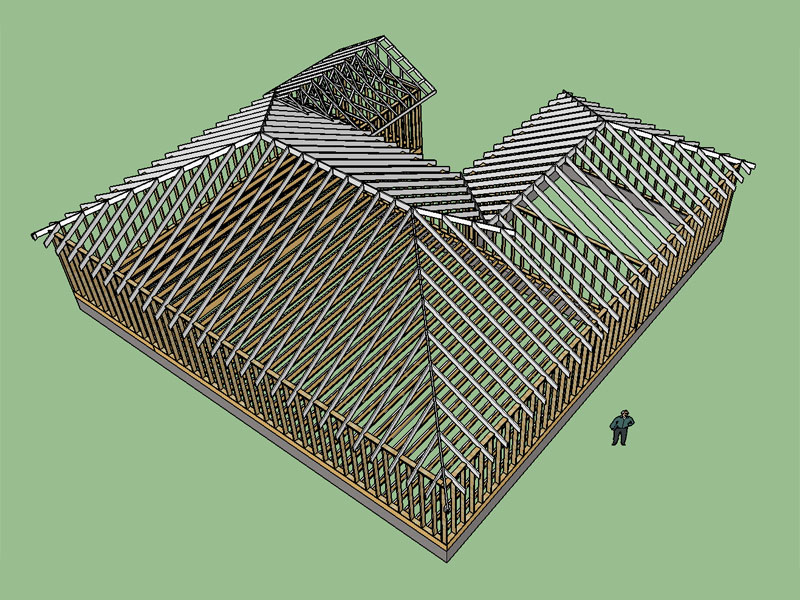
Overall the process has been simplified by having the hip roof feature in the plugin. Trimming the members is the most time consuming, perhaps a more efficient trim tool can be devised so that intersecting members can be easily trimmed back to clean up a complex roof. Ultimately it would be cool to have the plugin automatically handle even more complex roofs such as this but that would take some serious programming.
Also note that I used a raised heel for the trusses so that the heel height and gutter line of the trusses matches that of the rafters.
-
On my Google+ page I posted some recent screenshots of the truss plugin output. One particular individual went on a rather long diatribe on the inferior nature of SketchUp as a design tool, I quote,
@unknownuser said:
"Well, if you are obsessive compulsive, sketchup is your tool. But for people who like to get projects done, there are tools that know what wood is, what lumber is, and know what the construction code is and draw in the meaningless details for you... like framing and rafters.
SketchUp doesn't know what a solid is. Doesn't do edge detection. Doesn't know what physics is. Can't self simply. Doesn't understand physical continuity. Doesn't understand region of focus. Can't deal with camera and material intersection. SketchUp has one intuitive tool, the extrusion tool, and somehow left everything else to confusion."
Some of his arguments I might agree with but it seems like the design community is starting to embrace SketchUp, at least more than I had realized. What made you as a designer or DIY'er decide to use SketchUp versus other design software?
-
Note the cripple or stub ceiling joists in this picture:

-
Testing out the hip roof feature with some more complex roof lines:
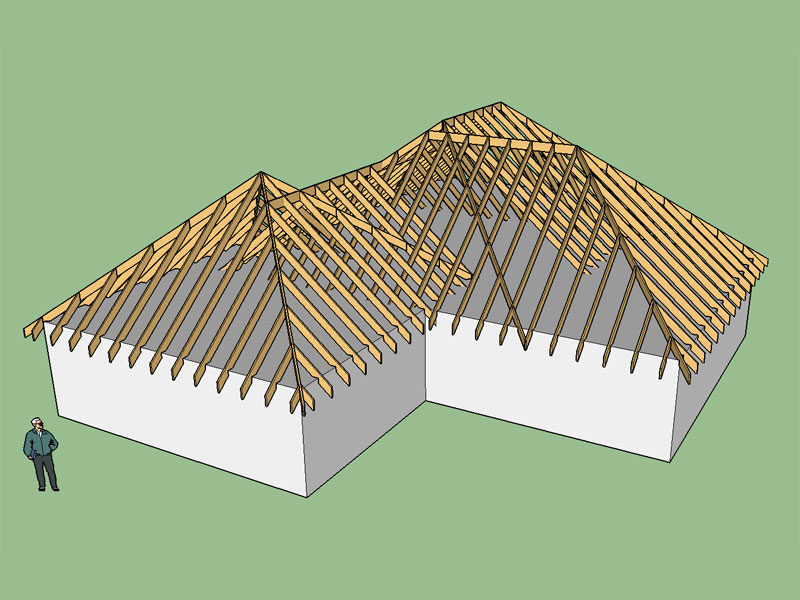
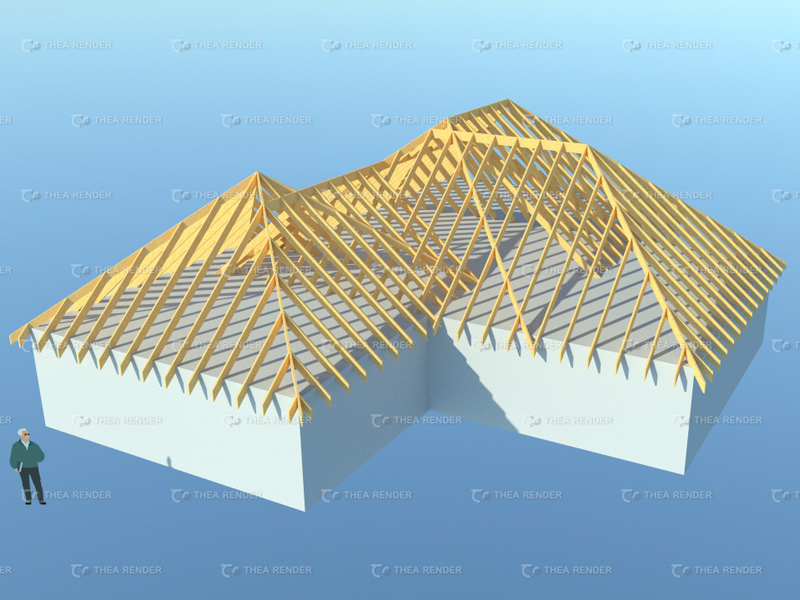
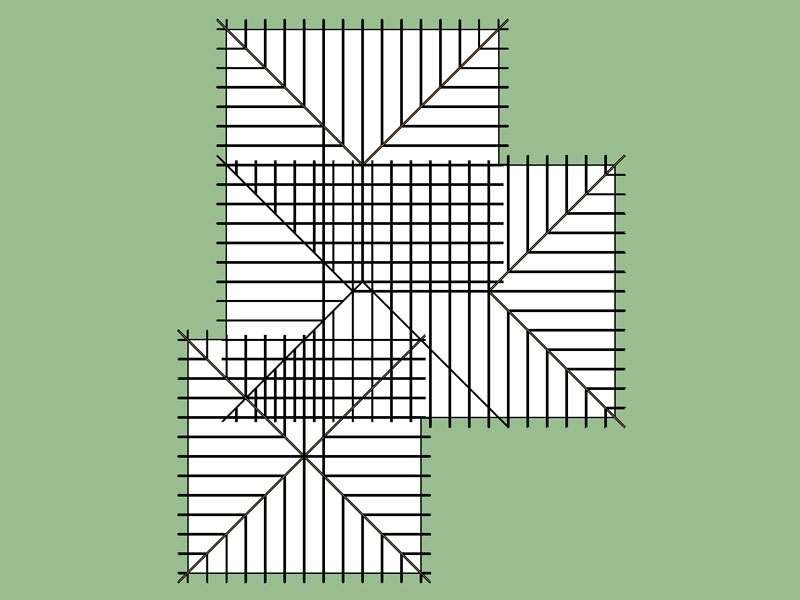
The thing that jumps out at me right away is the ease with which I can generate the basic roof lines and most of the rafters. This particular roof required (4) rectangular roofs to generate all of the lines. The only thing that is missing is the valley rafters. To make this feature more functional for complex roofs I only need to have a tool that can generate valley rafters and trim back members to create the cripple rafters.
-
@medeek said:
What made you as a designer or DIY'er decide to use SketchUp versus other design software?
I have a vivid memory of the first time I used SU back in 2003...
Suddenly, I felt like I was out in the yard, working on the lawn under blue a sky, with the sun shining...
This simple environment was so removed from any other 'cad' dungeon I had attempted to use that it got me hooked...
then, I discovered 'FollowMe' and soon after plugins...
I went off SU during the early Google era, but was drawn back by the Fredo, Tig, Kirell, Morrisdov and other plugins of the time...
happy new year
john
-
I worked in the Aerospace industry for about 6 years prior to changing my focus to residential design and structural engineering. I had the unfortunate opportunity of having to use CATIA. This 3D design program feels like a dinosaur compared to anything I have ever used, and hopefully I never have to use it again. I also worked a lot with Solidworks, which I find a lot more modern and much more fun to use. I have created complete 3D residential designs using Solidworks that are fully parametric:
The big problem I had with Solidworks is the 2D drawing generation required a number of details added to the drawing sheets manually. Solidworks is very slow and heavy with manual sketches so I ended up reverting to AutoCAD which can handle very complex 2D drawings without so much as a flicker.
Lately, I have moved completely away from Solidworks as a design tool because of the time it takes to generate models and also AutoCAD is where I end up when it comes generating the drawing set. However, a 3D model is always nice to have for ISO views and other reasons. I've briefly played with Chief Architect as a Solidworks replacement but I find it too limiting and I was not overly impressed.
The one thing I really like about SketchUp is I can pass the model on to the client and they can quickly download and install the program (lightweight) and be up and running almost instantly. I wish the software had a few more tools built in like a mirror function etc... but overall it is a pretty good package especially when you consider that you can just download it for free and most plugins are relatively inexpensive.
The big architectural firms typically use products like Revit, but the casual user and smaller design firms don't have that amount of budget to dump into software.
-
That Solidworks house model is cool. I always just thought of SolidWorks for mechanical, industrial, and product design.
-
This is unrelated to the functionality of the plugin but I managed after two days of pulling my hair out to somehow get the PayPal Express Checkout to work on the site. A number of clients had been requesting the PayPal option rather than use their credit cards over the internet.
-
Looking at cantilevered trusses tonight. The use of a wedge, slider or strut depends on the amount of the overhang and in some cases if the overhang (cantilever) is within the scarf cut of the top chord no additional member is required, see image below:
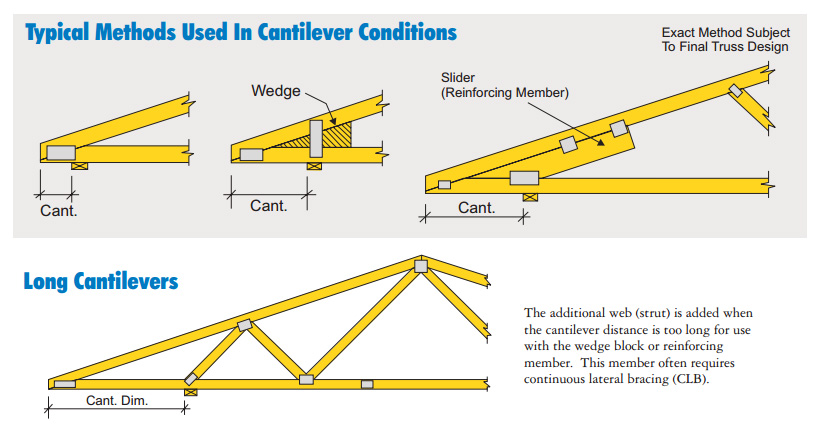
Notice how the web strut is centered over the point of bearing with the long cantilever. Also notice that the panel point placement of this fink truss was not altered with the addition of the cantilever.
Basically this will be a new truss family and I'll start with the fink truss and take it from there. If anyone has shop drawing from truss plants they are willing to share that show different configurations of a cantilever truss, that would be very helpful.
-
Version 1.2.4 - 01.08.2016
- Plugin integrated with the Medeek Truss Designer.
- Engineering of common fink truss enabled.
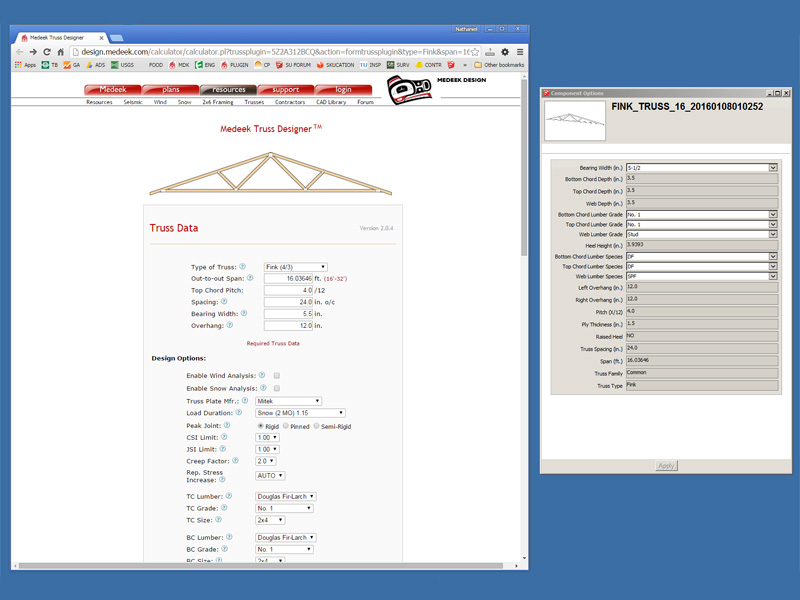
When a new truss is created (common truss types only for now) the parameters are specified within the dynamic component attribute library. Opening the component options allows one to change some of these values.
The new engineering icon

allows one to automatically transfer all of the truss design parameters directly from SketchUp to the Truss Designer for engineering checks. -
The development of the plugin has come a long way in a short period of time, thanks for the dedication!
-
@medeek said:
On my Google+ page I posted some recent screenshots of the truss plugin output. One particular individual went on a rather long diatribe on the inferior nature of SketchUp as a design tool, I quote,
@unknownuser said:
"Well, if you are obsessive compulsive, sketchup is your tool. But for people who like to get projects done, there are tools that know what wood is, what lumber is, and know what the construction code is and draw in the meaningless details for you... like framing and rafters.
SketchUp doesn't know what a solid is. Doesn't do edge detection. Doesn't know what physics is. Can't self simply. Doesn't understand physical continuity. Doesn't understand region of focus. Can't deal with camera and material intersection. SketchUp has one intuitive tool, the extrusion tool, and somehow left everything else to confusion."
Some of his arguments I might agree with but it seems like the design community is starting to embrace SketchUp, at least more than I had realized. What made you as a designer or DIY'er decide to use SketchUp versus other design software?
%(#4000FF)[I think the design community has already embraced SketchUp as one tool to use. But one question to your questioner, WHAT tools is he/she referring to? and why the "diatribe" (who cares?).
I guess that's TWO questions.
The answer to your question, for me, may verify your questioner's suspicions. SketchUp is relatively cheap and easy to learn, and came along when other apps I was using failed. I did not review a lot of softwares and it satisfied what I needed at the time.
For what you are doing here, it may very well be a good idea for you to look at real BIM.]
Advertisement







